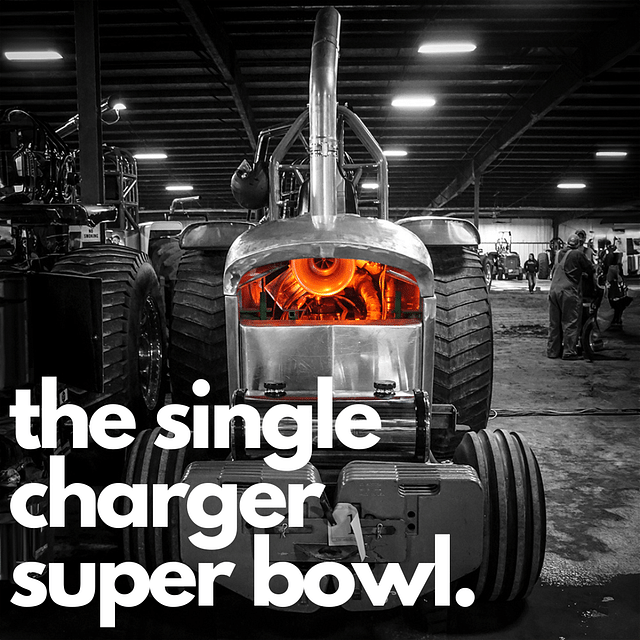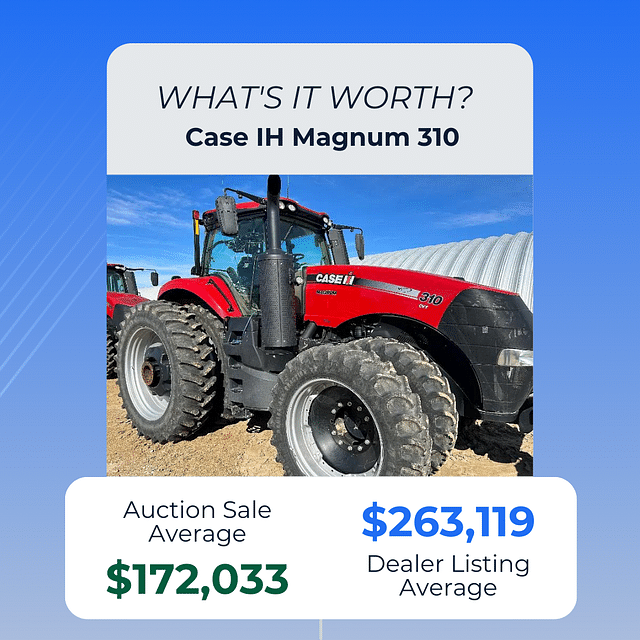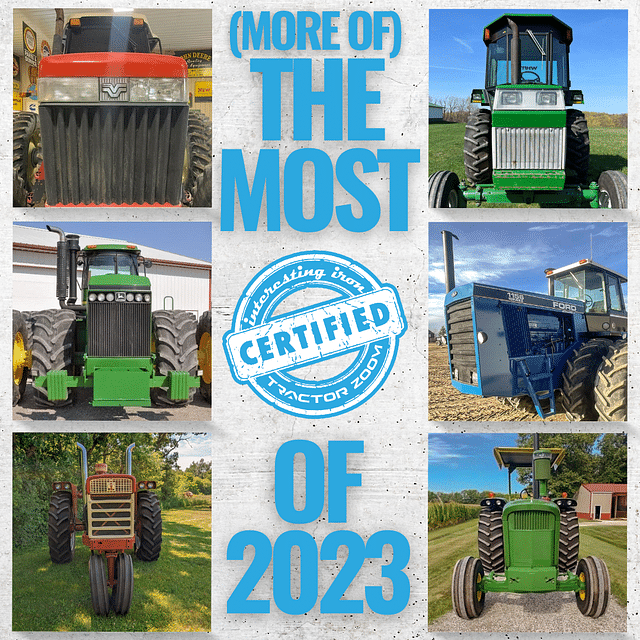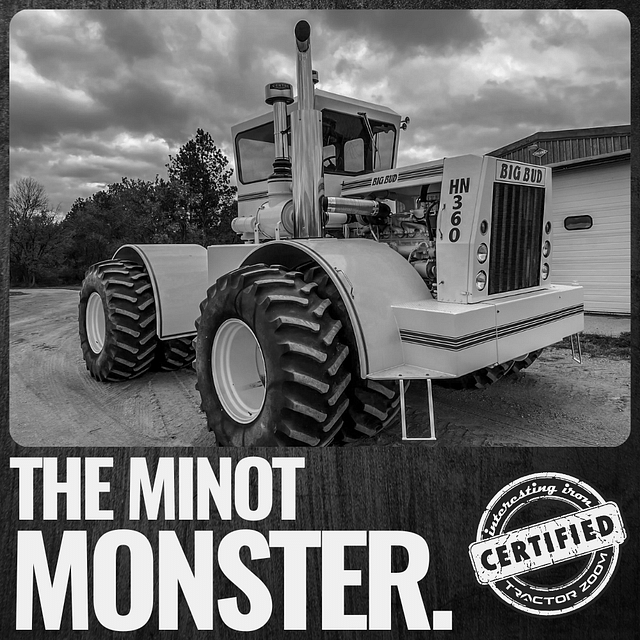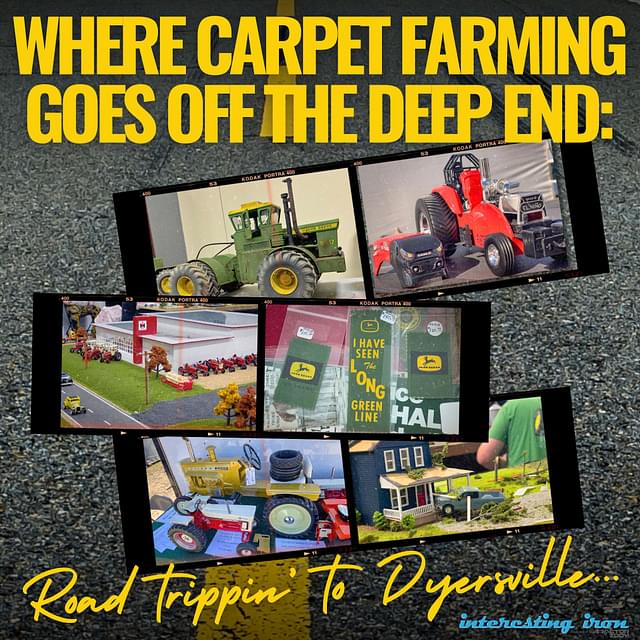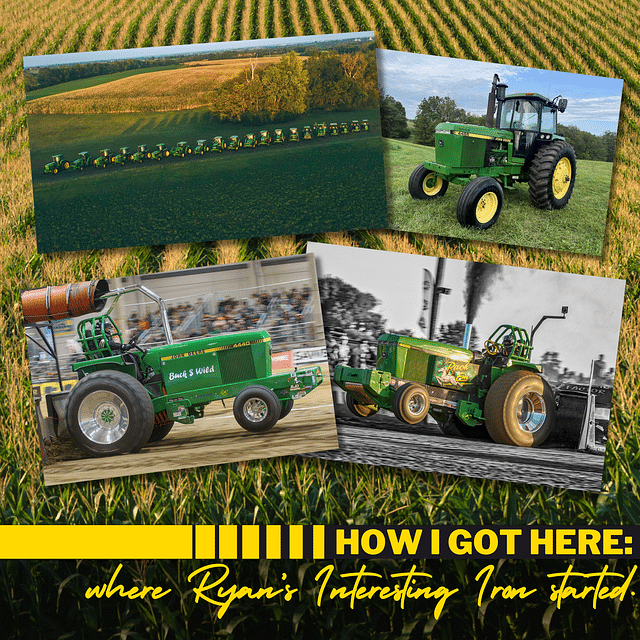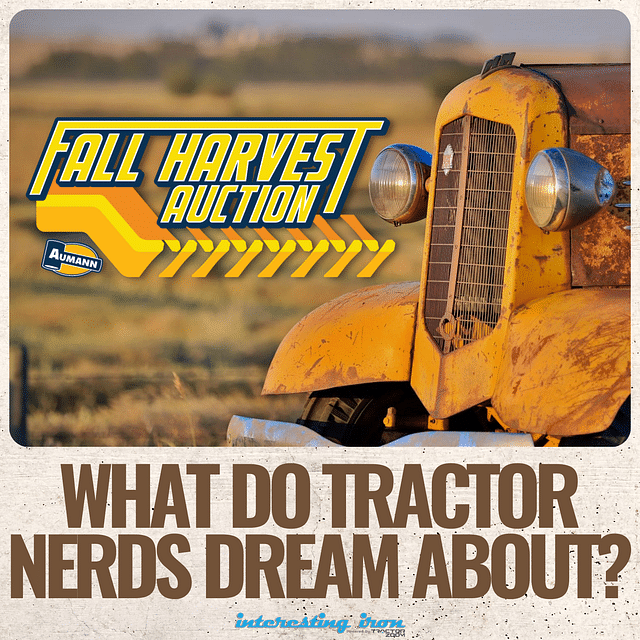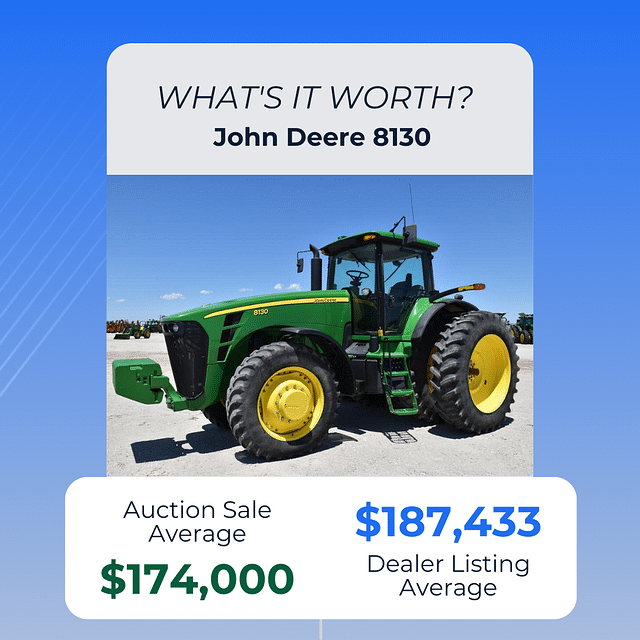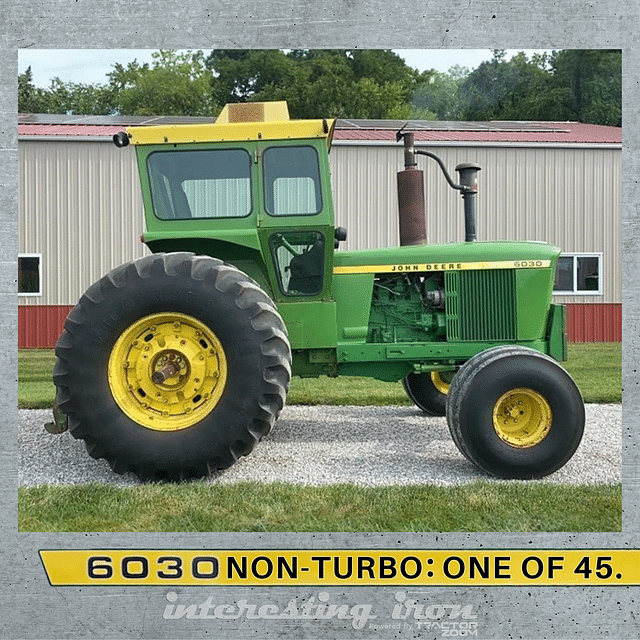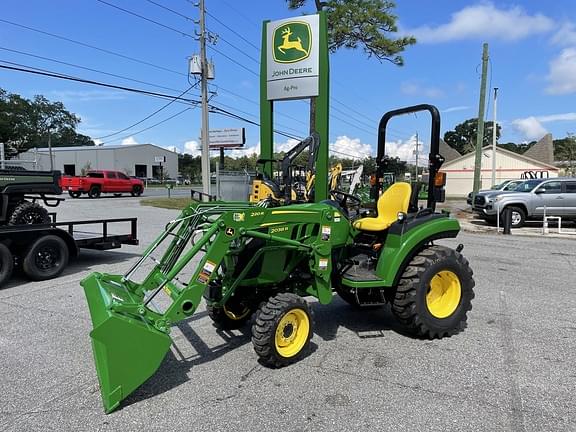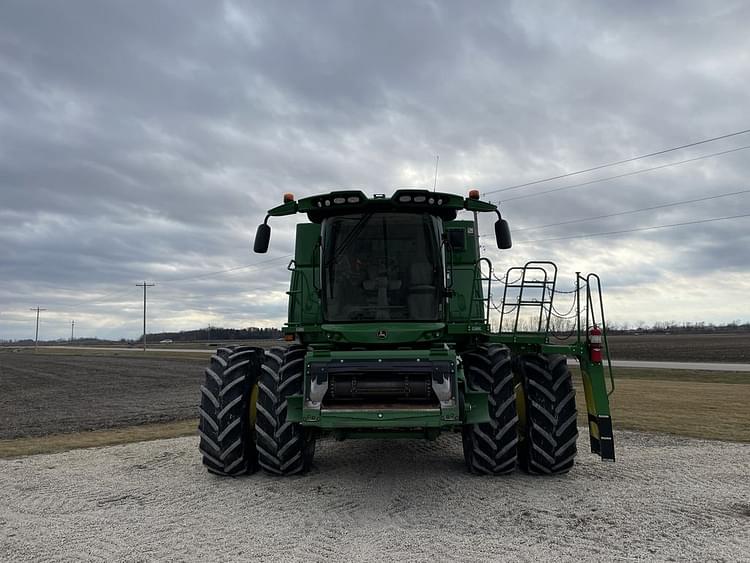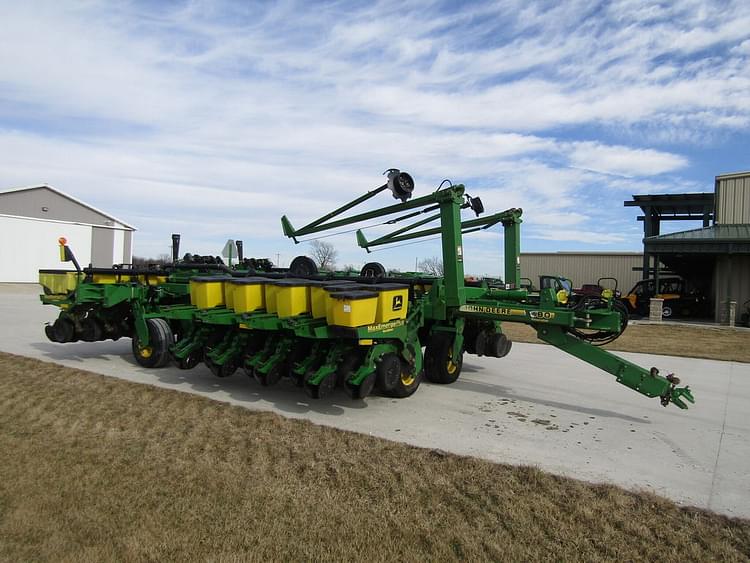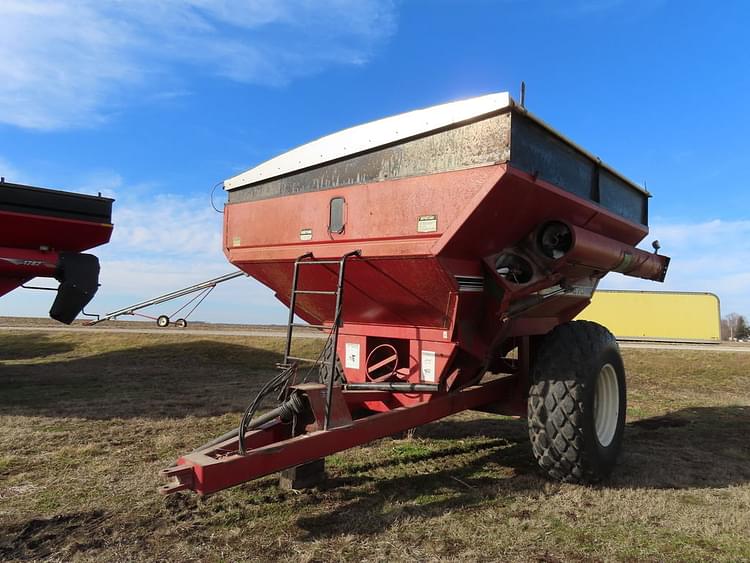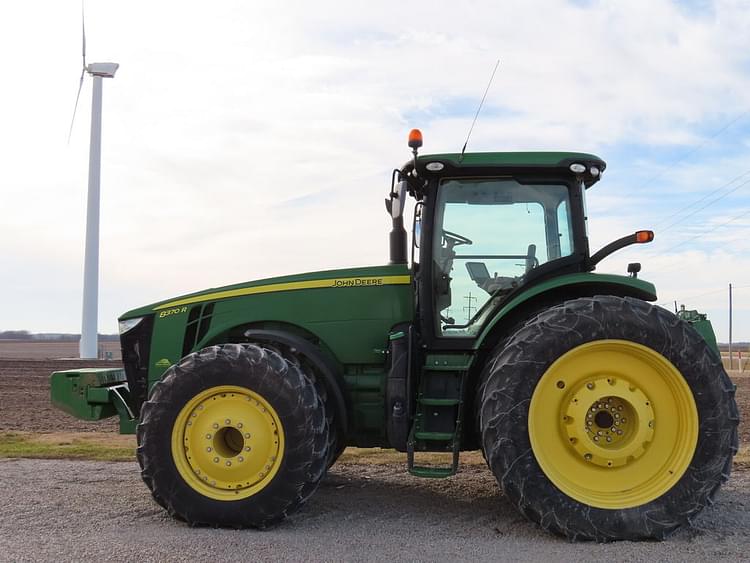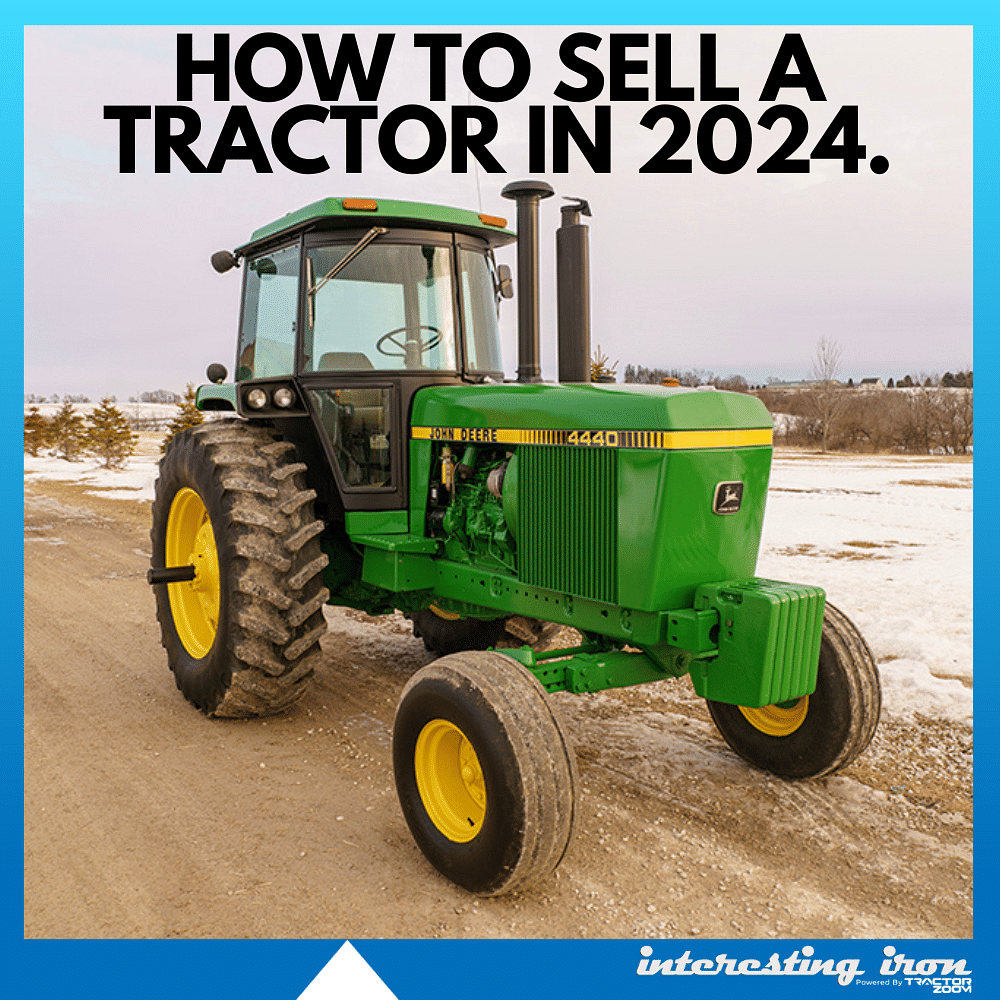
Let’s talk about how to sell a tractor in 2024, folks, because times have changed a lot. This ain’t 2003 anymore…
People complain to me all the time about what a pain it is to sell stuff online these days. And frankly, they’re right. It doesn’t matter if it’s on an auction, Facebook, or any other marketplace – it does take time and effort. However, that being said, some people make it a lot harder than they need to!
So let’s dig in to how to sell a tractor online these days. I’ll caveat this by saying that your mileage may vary and there could be some individual nuances depending on how you’re selling. Still, most of what’s on my mind this week applies universally.
It all boils down to presentation.
(I can hear some of you in the back…”Yeah, it’s always been about presentation; where’ve you been, Interesting Iron-guy?”)
You’re right – it’s always been about presentation. Here’s the thing, though…20 years ago, “presentation” meant something completely different. The rules have changed.
Back in the day…
Take an auction, for instance.

25 years ago, the criteria was different for how buyers judged presentation. Honestly, it was almost more about how the auctioneer and seller did their jobs on auction day. How straight was the equipment lined up? Were the tractors bunched together? Had they been cleaned up? How did the property look? Was it easy to get registered for a bidder number? Did the auctioneer sound good? How’d the coffee taste?
(Yes, some of this is probably a little on the facetious side, but you get where I’m going with this.)
Then about 15 or 20 years ago, a series of technology revolutions changed things…
Smart Phones: Putting the internet in your pocket.
In 2007, we started to see smart phones hit the market. They had big screens and they could run a full-featured internet browser! Not long afterwards, auction sites started popping up. It wasn’t the primary method of selling equipment, but it was an option if an auctioneer wanted to start messing with the internet. Most didn’t.
Facebook: Helping farmers get social in a hurry.
Meanwhile, while iPhones and Androids were getting popular, some guy named Mark from Harvard was building a website that would change the way people interacted with one another…Facebook.
Instantly, this world got a whole lot smaller. Row crop farmers from the I-states talked to fruit growers from Michigan. Two-cylinder nuts from Kentucky got to know two-cylinder nuts from Oregon. It didn’t take too long for auctioneers to catch on, either. They figured out that social media could be a good way to spread the word about auctions if the bidders didn’t have to be there in person. Thus, more and more auctions went online. It opened up the market for equipment so the right people could find it.
That’s when the word “presentation” started to mean something different.
COVID: The tipping point.
The real kicker, though, was the pandemic. Due to restrictions on people assembling in groups, nobody could have an in-person auction. Nearly every auction held after February of 2020 was completely virtual; there wasn’t another option.
When all of that happened, it didn’t matter if the coffee was any good or the equipment was lined up, because nobody could was onsite when the auction happened. The information shared and experience that an auctioneer and a seller would work together to create at a farm had to be created on a phone screen.
Since 2020, that’s become the primary method of conducting an auction. Auctioneers figured out that buyers would still buy what they couldn’t see in person, but it changed the method of presenting equipment.
That brings us to today…
Today, it’s all about the connection and experience you can bring to a buyer who might be three counties – or three states – away. That’s not an easy thing to do, either…but it can be done.
It just takes a plan.
How to sell a tractor: The plan.
From where I’m sitting, presentation breaks down to four pieces.
- Prep
- Photos
- Descriptions
- Videos
I’m not trying to oversimplify things or come off condescending, but at the end of the day, it really is that simple. At the end of the day, the goal is to build trust with potential buyers and help them see your tractor at home in their operation or collection. Here’s the thing, though; the way you go about each of these parts can make or break that goal.
So, that having been said, let’s get into it.
Prep: Putting your best foot forward.
This is a foundational step, and there’s a lot that rides on it – especially when it comes to establishing trust. Even though we’re taught not to judge a book by its cover, that’s exactly what we do. Furthermore, it’s exactly what buyers do when they see your machine for the first time.
So, clean up the tractor inside and out. Put your best foot forward.
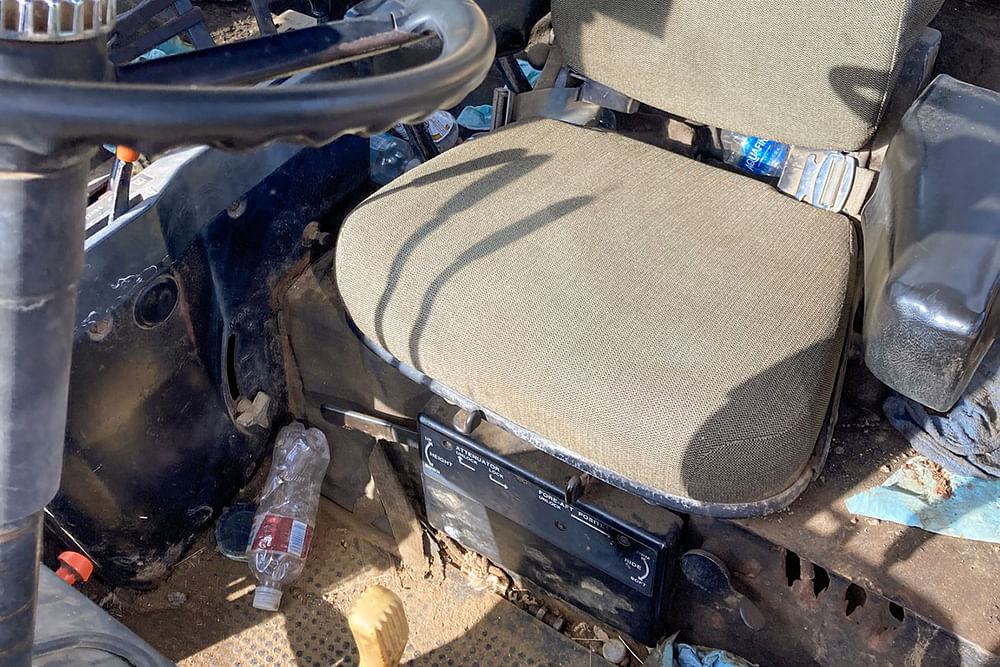
Inside
This is a pet peeve of mine, and there’s no reason to sugarcoat it.
Get the garbage out and sweep out the dirt – at the very least. If you brought it in with you, take it out when you leave. If I’m a buyer and I see last fall’s Subway wrappers, an ancient can of ether and a fossilized can of Kodiak in the photo, I’m moving on. It makes me think, “If they can’t keep up on simple things like keeping the cab clean, what else have they neglected and how much is it gonna cost me?”
Yes, I know that to a lot of you, this is pretty much common sense. I mean, I get that some people aren’t neat freaks (I’m not), but when you go to sell it or trade it in, it seems like tidying up is kind of a no-brainer. Still, we all see it on a daily basis in online equipment listings!
Outside
Also, pull out the powerwasher and soap and clean the exterior. How much elbow grease you put in is up to you, but bear in mind that your buyer doesn’t want to have to imagine what it looks like when it’s clean. I understand that with an old tractor on the fencerow, there’s only so much you can do. Still, buyers want to feel like you’ve put forth at least a little effort. If there’s sixteen pounds of bird poop on the tractor, let’s at least attempt to get rid of that.
Don’t go overboard.
The last tip I’d offer is this. There’s a fine line between putting your best foot forward and overdoing it. Three coats of wax and a bottle of tire shine applied to a 16,000-hour 4440 that lived outside won’t make it new again. It won’t fool buyers, either.
At the end of the day, unless it’s listed as a restored classic, most buyers would rather see it in its cleaned-up work clothes. They’ll appreciate the honesty, too.
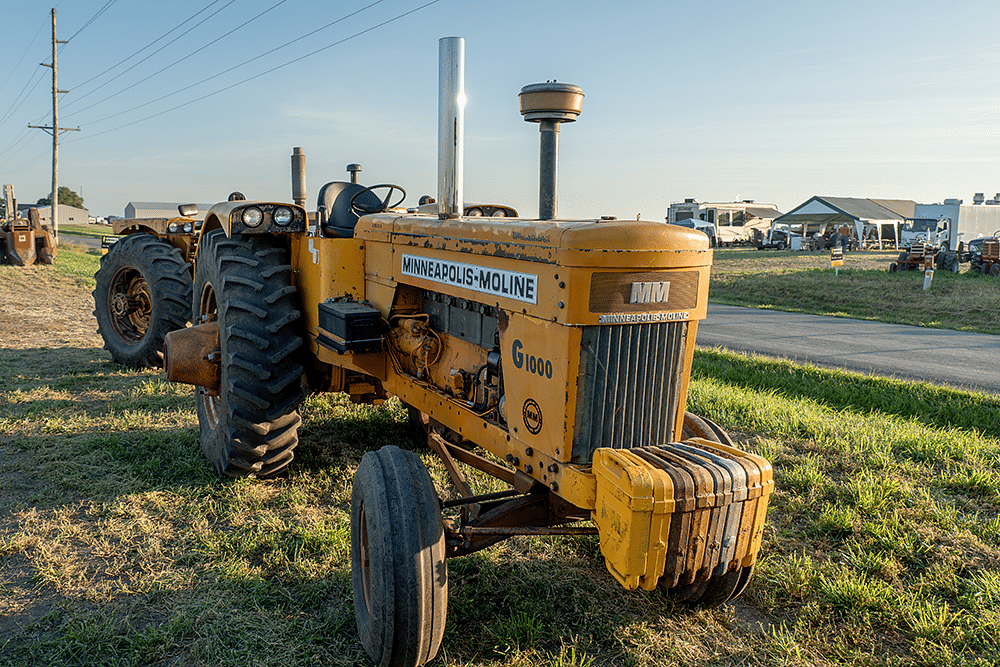
Once the prep work is done, it’s time to take photos. How do you take good ones?
Photos: Worth a thousand words…or more?
They say that a photo is worth a thousand words – and generally speaking, the photographer in me agrees with them.
However, in this case, I think they’re dead wrong.
If you’re trying to sell a tractor online selling, a bad photo is worth absolutely squat diddle. A good photo isn’t worth a thousand words, but it is worth a click to the next photo…and that’s something.
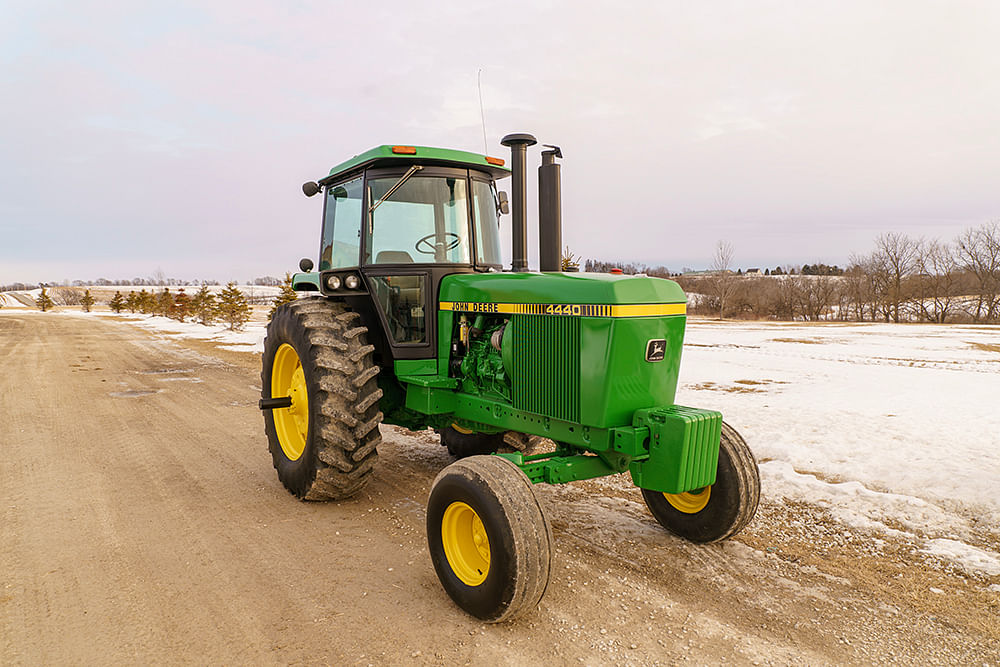
Fortunately, good photos aren’t hard to take. You don’t need a super-spendy digital camera. Pretty much any smartphone from the last five years can do the job just fine. However, you do need to be intentional about it.
Here’s a cheat sheet with a few guiding principles. It’s by no means exhaustive, but it’s a good place to start.
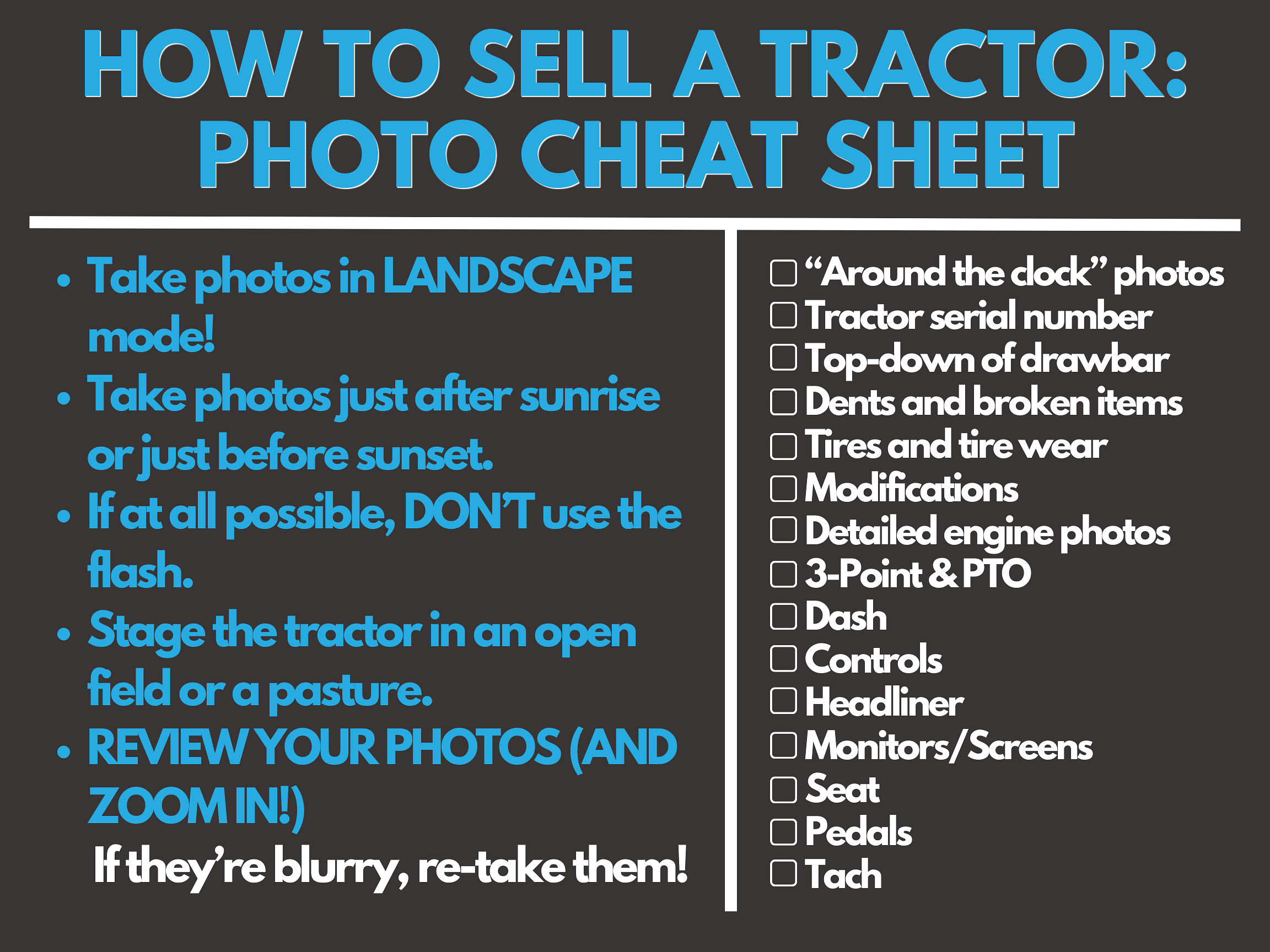
Let’s dig in to a few of the most important ones, from my perspective.
First, a couple of ground rules for taking photos when you’re selling a tractor online. These don’t really need explanation, in my opinion.
Say NO to portrait mode!
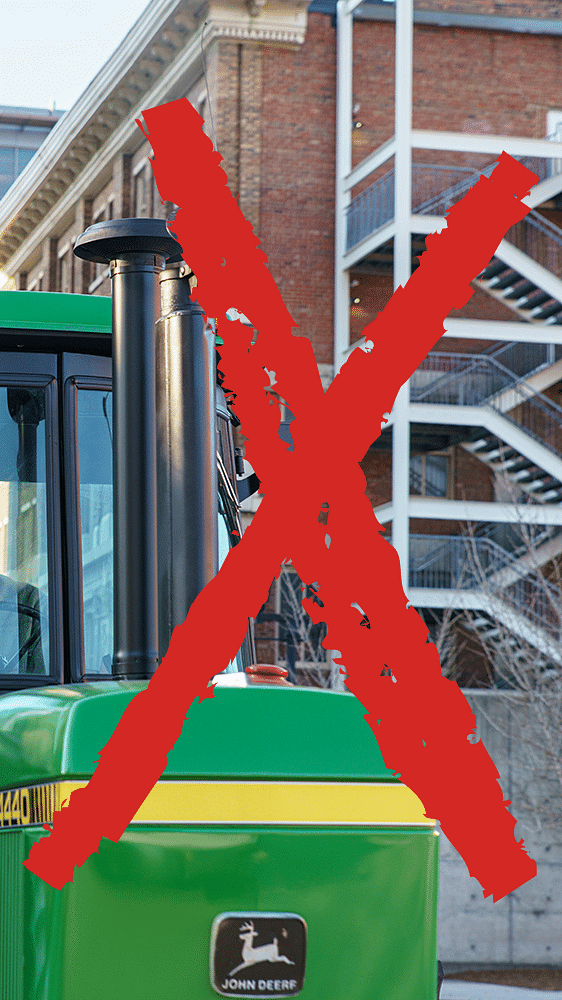
Okay, so now that that’s out of the way, here’s a few more tips, tricks, and suggestions for taking photos of the tractor you want to sell!
Nobody wants to see the inside of your barn…
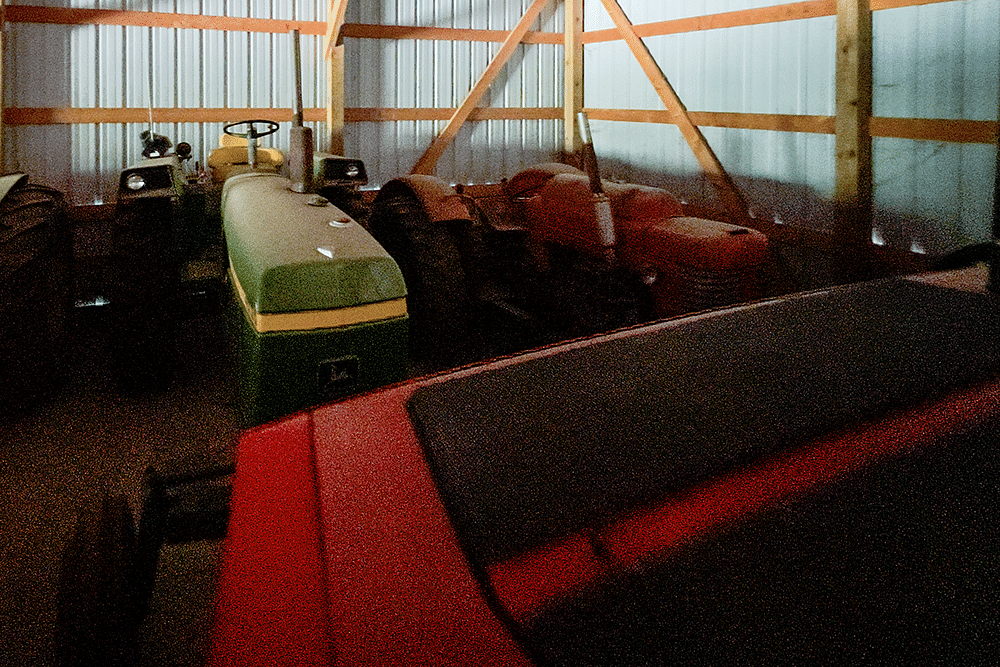
Spoiler alert…ain’t nobody want to see the inside of your barn. Take the tractor out in the daylight!
It’s dark, cameras don’t work well in there, and you usually can’t show enough detail for anybody to actually make out what you’re selling. Heck, I could’ve taken this photo with my big camera and it wouldn’t have turned out!
If you’re selling it, it has to come out of the barn to be cleaned up anyway. Be efficient with your time and kill two birds with one stone. Once the tractor has been cleaned (and dried – the wet look doesn’t fool anybody), put it in an uncluttered field or pasture.
De-clutter your background…
The goal is to take nicely centered photos that fit the tractor well within the screen, with nothing to take the focus away from it. The reason for this is because – as a society – our attention span is shorter than ever for stuff like this. If there’s lots of things in a photo, most people will end up looking at all the little stuff rather than the big thing!
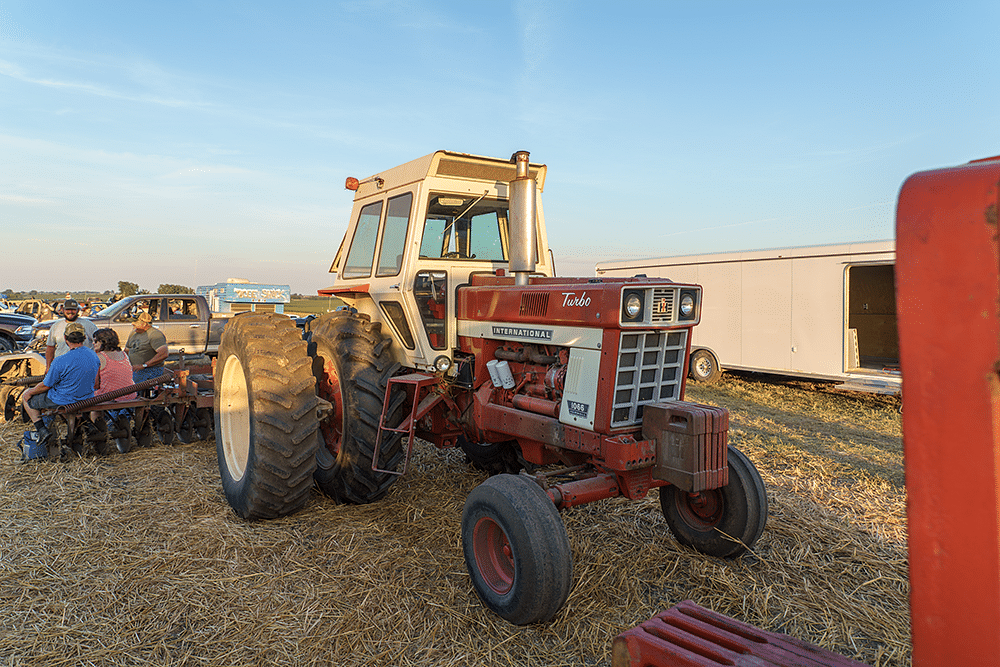
If you can stage your tractor in a setting like this one, I can almost guarantee that it’ll get more attention than a busy background!
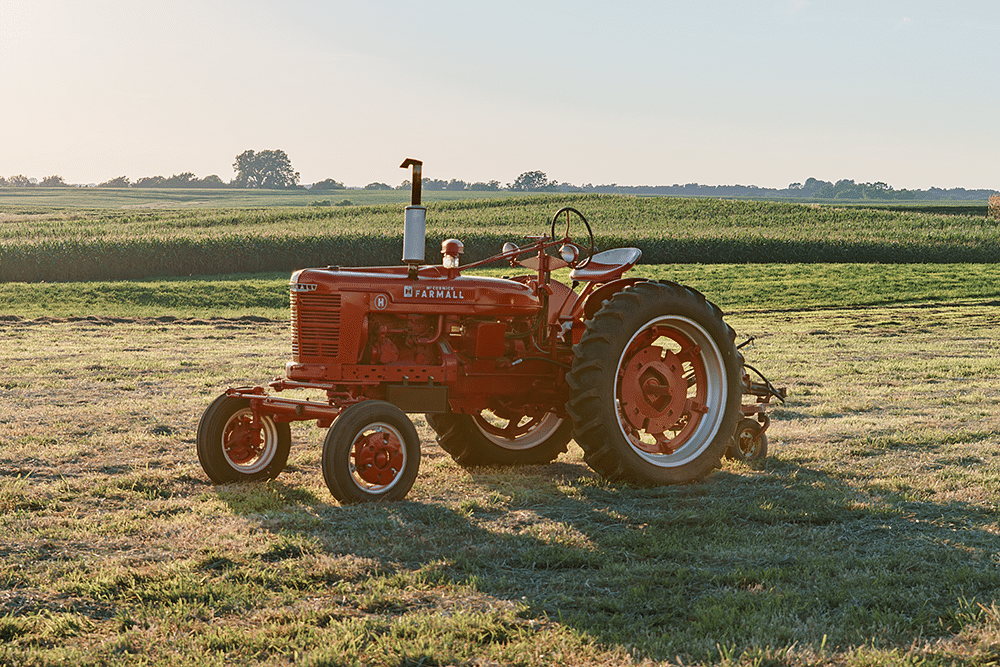
Golden Hour: Timing is everything…
Everything – and I mean everything – looks better on camera during the hour after sunrise and the hour before sunset. Photographers refer to it as “Golden Hour” and it is absolutely a game-changer. When the sun is low in the sky, it bathes everything in a golden glow. It makes colors feel more vibrant and warmer.

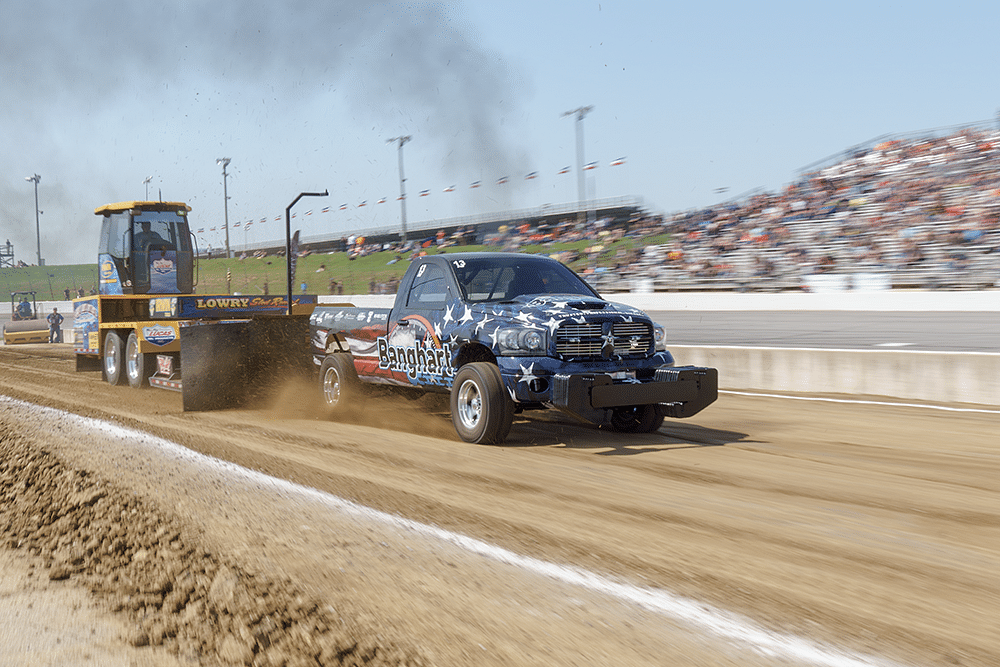
The difference between a Golden Hour photo and one that’s not is pretty striking, isn’t it?
Take photos around the clock…
Imagine that you’re looking down on your tractor from up in the air. If you lay a clock over the top of the tractor, that’s what I’m getting at. Take a photo at every hour/hash mark on the clock, making sure that you’re able to get the entire tractor on the screen in landscape mode. Even if you have to back up a little to fit it all in, it’ll still work. Phone cameras take pretty big photos these days!
By doing this, you ensure that your buyers get a good look all the way around the tractor. That’s pretty important in my book.
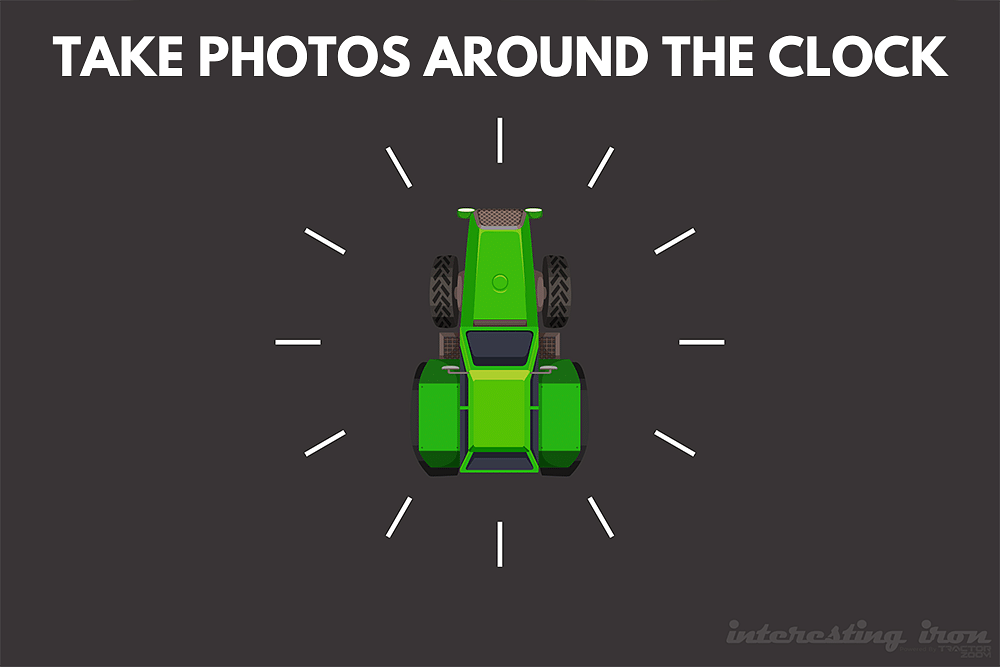
ALWAYS review your photos and zoom in! If they’re blurry, re-take them!
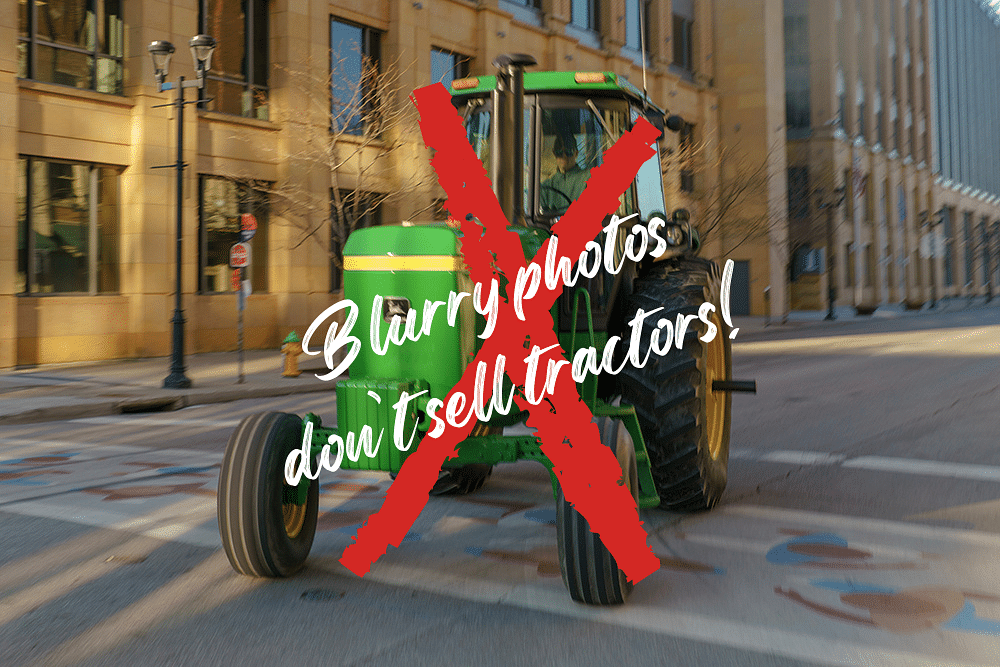
Photos to include…
So you’ve got a dozen photos walking all the way around the tractor thus far. What else?
Here’s a few that I’d be looking for in a listing.
- Serial number: The tractor’s serial number is a must. If it’s not in the photos or the description, there’s a very good chance I’m moving on. If you can’t find the serial number, check the TractorData website. It’ll usually give you a little direction as to the location if it’s tricky to find.
- Drawbar: Stand directly over the top of the drawbar and take a photo of the hole. That goes a long way towards determining the age of the tractor, and whether or not the hours are accurate.
- Dents and broken items: If it’s a major dent, I want a photo of it. The same goes for stuff that’s broken. Show me the good, the bad, and the ugly.
- Tires and tire wear: Ideally, I’d like to see a photo of each tire so that the brand, size, and depth are legible. Additionally, I want to know if the tires are weather-checked or cracking. Major cracks deserve their own photo.
- Modifications: Regardless of whether or not you performed the modification, I’d want to see photos of it. Farmer-fied engineering is a real thing, but sometimes it might not dovetail with my plans for the tractor.
- Detailed engine photos: I want to see what the engine looks like. If the block has been patched back together or there’s an aftermarket turbo kit like an M&W, include photos of all of it. If it’s got an M&W oil pan, definitely include a photo of that in the listing. That could potentially increase the value a bit!
- 3-Point & PTO: I’d like to see close-up photos of the PTO shaft(s), 3-point, and hydraulic remotes.
In the cab, here’s what I’d want to see.
- Tach: I want to visually verify how many hours are on the machine. If the tach has been changed and you still have the old one stashed away in the shop, pull it out and take a photo of that, too.
- Dash: Show me how the dash has held up.
- Controls: Show me how the controls have held up as well.
- Pedals: Pedal wear is a good indicator of whether or not the tach has rolled over (i.e. 10,000 hours).
- Seat(s): If it’s in great shape, I want to know that. If not, I want to know that too.
- Headliner: If I’ve got to plan on replacing a headliner before I put the machine to work, I need to plan for that.
The Paper Trail…
Lastly, there’s one more thing I want – records. I want photos or scans of as much of the service records as you can possibly provide. By including those in the photo listing, you’re establishing a pattern. Basically, you’re telling me how well you cared for that tractor while you owned it. Receipts for parts and service work, a logbook full of entries for fluids and filters, etc.
If you don’t have a scanner, there are a handful of pretty good ones on the Apple App store or the Google Play store. If I remember right, most of ’em are free, too.
(BTW, one more thing that I didn’t have a good spot for in the list above; if you bought it as a basketcase and spent three years restoring it, I know you took some progress photos during the process. Include those in the listing! Show me what you did!)
Now, let’s move on to descriptions.
Make your words count…
From where I’m sitting, a good description does two things. It backs up what you show in your photos and videos, and fills in any gaps.
It needs to be complete, and above anything else, it needs to be completely transparent. The internet can sniff out a lie in a heartbeat, and it never forgets.
You have to be accurate, and you have to double-check yourself before you hit the submit button. Photos and videos might grab a buyer’s attention, but the description is where they’ll get serious.
If I’m a buyer, here’s what I want to see in your description.
Just the facts, ma’am.
Tell me the year, make, and model. Include the full serial number – and make sure it’s the serial number for the tractor, not the cab or the engine. Cab and engine serial numbers aren’t as important to me as the one for the tractor.
If you don’t include it and it’s not in the photos, I’m going to assume the worst. Furthermore, I’m not going to bid or start a buying conversation with you.
(The internet has taught us all to be wary of stuff like this; history has taught us that sometimes there’s a reason that serial numbers aren’t included, and it’s not always because the seller – or auctioneer – forgot to include it.)
Tell me what you know.
Tell me what you know about the history of this tractor. You don’t have to wax super-poetic here; this isn’t the place for a history of the farm, but hit the high points. Tell me when and where it came from, and tell me how you used it.
Shoot me straight.
Be honest about the tractor. If it’s a beat-up piece of junk but the sheet metal is fairly solid, tell me that. My priorities might be different than yours. Who knows, maybe I actually want a roached-out Arkansas 4-post that’s baked in the sun for years!
My point is this; I’d rather you be honest with me upfront rather than try to put one over on me. I mean, like I said before, the internet is a great big place full of smart people. They’ll catch you in the lie, and they’ll expose you for it.
Get the details right…
This is where I get annoyed.
Details like spelling the manufacturer’s name correctly seems like it’s a no-brainer, right?
John Deere has been making farm equipment for 187 years now. So help me, if I read one more auction or for sale listing that says “Jon Deer” in the description, I think I’m going to go insane. Four letters in the first name, five in the last. E on the end.
This is more than just a “Gosh, that makes the Interesting Iron guy blow a gasket!” kind of thing, though. Misspellings in the descriptions lead to search engines passing results because the words don’t match. What if the search engine isn’t smart enough to realize that “Jonh Durr” in a listing is actually “John Deere”? Anybody who’s looking to buy a nice baler tractor isn’t going to see the listing for your pristine 3000-hour 4440!
The same goes for getting model numbers right – and this is really prevalent in over the road semis. “________ truck” isn’t acceptable. It’s 2024. Call the dealer and give the parts counter guy the VIN. They’ll tell you what the model is. Don’t be lazy. Put in the five minutes to do it right.
At the end of the day, if my gut tells me that something’s off, or I feel like you didn’t take enough time to give your work a once-over, I’m moving on to the one.
Okay, now that I’ve completely beaten this topic to death…
We’re almost finished, folks. Hopefully your phone’s battery is still charged, because we’ve got one more thing to use it for…video.
Make the connection with your buyer.
I don’t have a snazzy photo to add here, but at the end of the day, I’d like to see two videos. Neither of ’em are hard to make, and don’t need to be longer than a minute or two. In a perfect world, they do need two people, though. Spouses, kids, grandkids, whomever’s around. They don’t need to be award-winning directors, they just need to be able to hold the camera out of the wind without putting their fingers over the lens! (Some days that last part is a struggle for me…)
Show me the tractor in action…
For this video, I’d like to see you cold start the tractor and let it idle for a minute. Walk me around the tractor and show me an abbreviated version of what you showed me in the photos. Take me up into the cab and show me around.
Then hand the phone off to somebody else (you don’t even need to stop the video if you don’t want to), and have them record you driving the tractor around. None of this 15 feet forward/15 feet backward nonsense. Take it through the gears and show me that it’ll turn and stop like it should. Show me that the PTO and 3-Point do what they’re supposed, too.
This is an easy video to make (it probably won’t take you more than five minutes to make), and it could be the best five minutes you invest in selling a tractor.
The second video might be a little harder, but it’s nothing to stress about.
Tell me what this tractor was to you…
I want to know what this tractor was/is to you. I want you to use your voice to tell me about the tractor you’re selling, and I want you to do it on camera.
Lots of people freak out when I suggest a video like this. They say stuff like, “I don’t even know what I’d say about it,” or “I don’t like being on camera; it’s not my thing.”
Yeah, I get that. Believe me, I get that. I don’t really love the idea of getting in front of the camera and talking either. There’s a reason that I bought a camera and started taking photos…it’s because if I’m behind the lens, I can’t be in front of it!
Here’s the thing. Your video doesn’t have to be perfect. There are marketing research firms who spend millions of dollars every year studying what kind of videos that everyday people like you and me react to. You know what they’ve found? Over the past few years, the research shows the videos that are resonating the most with consumers is the authentic, un-produced, un-scripted stuff. Videos where real people who don’t sound or look like movie stars tell real stories.
And because I’m willing to put my money where my mouth is, I made a video just for this article. It’s not super pretty. I repeat myself far more than I should’ve and stumbled on some words from time to time, too. If I can do this, so can you!
Tips for these kinds of videos.
- If you’re shooting the video outdoors, pick a day when the wind isn’t blowing a zillion miles an hour. It makes it a lot easier to hear you.
- If you’re shooting it indoors, kill the shop radio or TV for a few minutes while you record. It’s hard to hear you when George Strait is singing about his exes in the background.
- Fight the urge to only tell me the good stuff; there’s got to be something about this tractor that bothered you. Tell me what that was, and why.
- If it’s an older machine, maybe stick to the high points in the light of time. I respect the fact that it was the first tractor that Dad bought new. However, if we’re not talking about more recent history by the two-minute mark, you might lose my attention and I might miss something important.
- Lastly, be yourself. Get the facts right, but don’t sweat the small stuff in the way you tell the story. I’m okay with hearing, “Uh…” once in a while as you gather your thoughts. Heck, use a cheat sheet if you need to. I don’t mind.
Why are videos like these so important to me as a buyer?
They remind me that whether you’re three counties or three states away, you’re a human and you farm because you love it and it’s in your blood – just like I do. Furthermore, knowing what kind of relationship you had with this machine reminds me that I’ve got machines just like that on my farm.
At the end of the day, it builds trust between me as a buyer and you as the seller. People buy farm equipment from other people, not vending machines. Having that common ground between us makes me that much more likely to pick up the phone or bid on your auction.
Wrapping it all up…
I know this was a long one, but I hope there’s some good information about how to sell a tractor in here. I’m sure I probably forgot something important along the way, so I hope you’ll grant me a little grace for that. These are just my opinions, but I do feel like most of what I’ve written applies universally. I hope so, at any rate!
‘Til next time, make it a great week!
